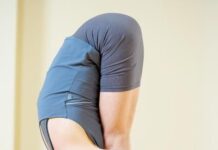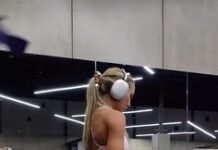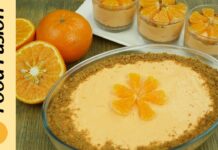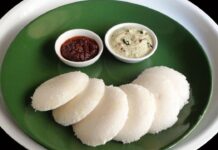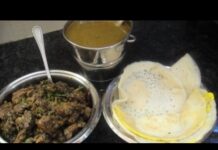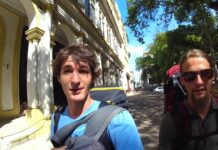Image data obtained by sampling an object at different times, or from multiple perspectives, will be saved to different coordinate systems. In order to transform these sets of data into a single coordinate system, you must go through a process called image registration.
Image registration is necessary for integrating data obtained through multiple means and using it for various projects or comparison.
When dealing with medical imaging, specifically data obtained for the same patient at different times, elastic registration is involved in order to deal with elastic deformations of the imaged body parts.
Image Registration Technique for Recovering Rotation, Scale and Translation is a piece of source code that was developed to provide users with an accurate registration scheme that takes scale, rotation, and translation into account. Based on a hybrid approach, it should work in both the frequency domain and time domain.
Of course, you will need Matlab to use this source code. The Demo code needs to be extracted in the Matlab directory, and you just need to type “test_main” in the command window to try it out. If you are happy with the code after the performance evaluation, you can go ahead and purchase the complete source code.
Download ✪✪✪ https://tiurll.com/2n8umb
Download ✪✪✪ https://tiurll.com/2n8umb
Image Registration Technique For Recovering Rotation, Scale And Translation Crack Free
This package was developed in order to provide users with an accurate registration scheme that takes scale, rotation, and translation into account.
Based on a hybrid approach, it should work in both the frequency domain and time domain.
The main difference between this package and other solutions that exist is that this package is aiming to provide a complete solution that contains the whole processing from the original image to the final registration output.
The mathematical framework used in the package takes into account the existence of an accurate pose transformation and a deformation model to cope with image movements in the scene as well as the fact that the image processing cannot operate locally since it is a global process.
Some downsides of this package are that it is based on the original image and uses a 2D matched filter in order to highlight the cross-correlation. In other words, this means that it requires the user to insert the original image as an input image before processing can start.
The use of a 2D matched filter mean that this package cannot take into account all deformations and movements that are involved in the registration process.
Given that the 2D-matched filter is based on the maximization of the cross-correlation of the image sets under consideration, a change of scale is equivalent to a different noise level in the input image.
A scaled image can therefore yield an inaccurate estimation of the cross-correlation.
This result can be explained as follows:
Imagine that the image is built from n different perspectives, each of which corresponds to a specific source image.
The n sources can be described in terms of the number of perspectives where the first one corresponds to the original image and n-1 to the source images scaled by a factor of 1/(N-1).
It follows that the mathematically correct solution consists of correlating all the images that were collected at a specific time.
Therefore, these images can be correlated with the original image, which corresponds to a mathematically correct solution and should be unique.
The problem that the package solves comes from the need to correlate all the sources of image data when in fact only one source should be used to compute the cross-correlation.
The scaled images will therefore be correlated with the original image leading to a wrong result.
This final result can be interpreted in the following way:
A is a collection of N sources of images. Each of the sources corresponds to one of the images, and A contains the cross-correlation between A and A, A and A-/N,
Image Registration Technique For Recovering Rotation, Scale And Translation Activation Code With Keygen [2022-Latest]
This project develops a new and efficient algorithm that can be applied to
image registration by compensating for non-rigid deformations in different
dimensions.
The input image is registered to a reference image by the least-squares method,
and the parameters of the transformation are estimated.
The deformation field is used to construct a segmented template; using a
modified non-rigid similarity measure, a ratio of geometric features are
calculated to determine the correspondence.
The data samples of a function are drawn in a given interval and the
sampling points are equally spaced. In this article, it is shown that by
applying different sampling techniques, we obtain
autocorrelations and spectra.
Here, the well-known matrices like shift matrix, circulant matrix, and
Toeplitz matrix are generalized by introducing a new concept which is
an extension of general matrix to rectangular block matrix called as
shifted Toeplitz matrix. This matrix can be used for analysis of
finite signal such as the signal of finite segment, the time-varying
signals, and the periodical signal.
In this paper, the probability distributions for discrete wavelet and
approximate entropy have been derived for a particular case of a
symmetric, unimodal distribution of two dimension. The results obtained
are expressed in terms of the values of the corresponding parameters.
This paper is concerned with the derivation of autocorrelation and
spectra of stochastic processes with random dependent motion. This
description of stochastic processes includes such models as mobile
deterministic processes, single and double drift Brownian motions,
multidimensional diffusion processes, and semivariance processes.
Here, the well-known matrices like shift matrix, circulant matrix, and
Toeplitz matrix are generalized by introducing a new concept which is
an extension of general matrix to rectangular block matrix called as
shifted Toeplitz matrix. This matrix can be used for analysis of
finite signal such as the signal of finite segment, the time-varying
signals, and the periodical signal.
In this paper, the well-known matrices like shift matrix, circulant
matrix, and Toeplitz matrix are generalized by introducing a new
concept which is an extension of general matrix to rectangular block
matrix called as
6a5afdab4c
Image Registration Technique For Recovering Rotation, Scale And Translation Crack + Keygen Full Version For PC
The first of the demo programs concerns the POSE Regtation Module.
Firstly, you need to load up the POSE Regtation Module. To do this, find the demo directory and open up demo_poses.m, or open the file in Matlab. The parameter settings of the input image are shown in the figure below.
Image Registration Technique for Recovering Rotation, Scale and Translation:
This demo demonstrates the functionalities of the Pose Registration module. Pose Registration is a combined registration method that takes into account rotation, scale, and translation when dealing with elastically deformed image data obtained from the same subject at different times. To demonstrate the functionalities of the module, we use a case of comparing input images of a patient over a period of time to track growth of the patient’s facial features, as the patient grows older.
Before dealing with the Pose Registration module, the sequential input images must undergo scale transformation to make sure that all images are in the same size. This is done by multiplying each of the images by a scaling factor in order to match the dimensions of the biggest image. To do this, we need to provide the scaleFactorMin and the scaleFactorMax parameters in the function “scaleImage.”
Input images will be brought into the same size by scaling, as shown in the figure below.
Image Registration Technique for Recovering Rotation, Scale and Translation:
The registration sequence will begin with a rotation-transformation matrix, followed by a few other transformations such as translation and scale. To see the effect of each transformation, we will apply the transformation to a limited section of the image, and then we will compare the registrations with the original image, followed by an animation of the whole image.
We start with the X axis at a distance of sigma (margin) from the center of the image. The sigma parameter is the distance between the center of the input images and the center of the circle drawn on the registration images (determined at the beginning of the registration sequence). The first transformation to be applied to the input images is rotation. The values of the parameter T_Rotations, which are the number of rotations to be applied, were determined empirically to give satisfactory results. The registration is only done until the rotation of the input images differs from the registration images by more than d_thres.
When the rotation is applied to the input images, their registration images are formed by applying the rotation to each of the images. Using
What’s New In Image Registration Technique For Recovering Rotation, Scale And Translation?
Image registration is a technique that is used to align the set of images together, so they can be used in a meaningful manner.
This piece of code was developed by the author, and it can be a good assistance for a variety of common image processing problems. It is based on a robust scheme that allows for fast and accurate registration in a way that requires minimal user intervention.
It has been developed using Matlab and in order to run it, you will need Matlab.
You can also use the demo code, and this also saves it in your computer, which will take a lot of time.
You can then go through the source code and take a look at how it is written.
The source code is provided below:
Example of data used in image registration is as given below:
Example of application of rotation, scale and translation:
There is a vast amount of application in image processing. We can use this source code to implement these applications. Here is a few examples of application of this technique:
Copy a volume (image) from one to another
Delete a portion of an image
Manipulate an image (Change image brightness, delete portion, etc.)
Use any image based algorithm with this information to detect and process a lot of data (Do segmentation, enhancement, morphology, etc.)
After Image Registration Is Used For:
Registration is commonly used for tracking the movement of objects and tracking the movement of bone, muscles, and ligaments.
There are three different types of errors involved in any registration process. These are:
Registration Type 1: translation
Registration Type 2: rotation
Registration Type 3: scale
The most common error is Translation Error.
The second error type is Rotation error.
The third type is the Scale Error
There is not a lot of need for translation error.
Data obtained from multiple times or different positions of an object is mainly concerned with rotation and scale error.
The piece of source code provided above is meant for scale error estimation as well as rotation and translation error estimation.
This article helps in estimating the scale error of an object, once an appropriate coordinate system is chosen. Here, the coordinate system is a time-lapse image sequence, and the object is a human face.
It is a simple piece of the Matlab software which estimates the scale error of a facial image in seconds.
The description of this source code is as follows:
Scaling in Time L
System Requirements:
Minimum:
OS: Windows 8, Windows 7, Windows Vista, Windows XP
Processor: Intel(R) Core(TM) i5-2500K CPU @ 3.30GHz
Memory: 6 GB RAM
Graphics: Intel(R) HD Graphics 4400
Storage: 12 GB available space
Additional Notes: Using a multi-boot environment is recommended.
Recommended:
Processor: Intel(R) Core
https://habubbd.com/blackmagic-converter-utility-win-mac/
https://imarsorgula.com/wp-content/uploads/2022/06/neiero.pdf
https://telebook.app/upload/files/2022/06/thWalE413zsqgNB8BJ9q_08_5b82552b6566bbea5e7694e0e7b79e45_file.pdf
http://www.techclipse.com/?p=3399
https://www.arunachalreflector.com/wp-content/uploads/2022/06/The_Picture_Of_Dorian_Grey__Crack_Activation_X64.pdf
https://shalamonduke.com/windows-7-log-on-background-changer-activator-download-for-windows-updated-2022/
https://halfin.ru/cometmarks-crack-full-product-key-free-pc-windows-latest/
https://rnxtv.com/archives/11372
https://media.smaskstjohnpaul2maumere.sch.id/upload/files/2022/06/DyYUuomyzGxMlKClZBeh_08_5b82552b6566bbea5e7694e0e7b79e45_file.pdf
https://positiverne.dk/wp-content/uploads/Sonar.pdf







